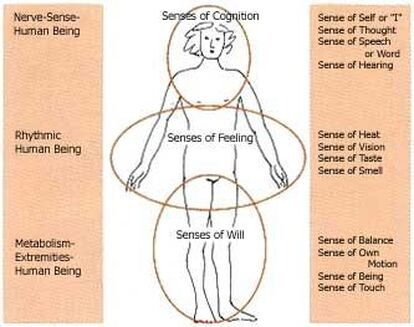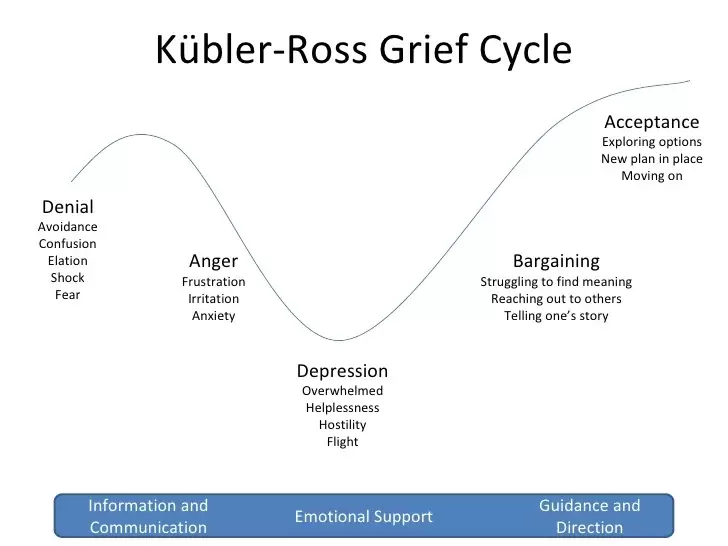|
In the course at TLF we have been discussing the 12 senses of Rudolf Steiner. We just finished the work with the four senses of the Will: Touch, Being (life force), Motion, and Balance.
As we shared in our last session, the topic came up for several of us regarding the nature of movement. Besides movement through space, there was a strong awareness of inner movement. I found it intriguing, It seemed to me that most of my experience of movement had an associated inward experience, in particular a feeling state that was the director. In my study of attention systems in the brain, the will is associated with the brain region known as the basal gangila. This system is connected to reflexive and voluntary movement. It is also connected to motivation and emotional networks. How does feeling express itself as related to the Will in this conversation of movement? Steiner has spoken on this idea in his lecture - Feeling in Relationship to Willing "To begin with I would like to note that only when we understand the will can we understand even a part of the feelings that move us. Thus we can ask ourselves, What is a feeling really? A feeling is closely related to will. Will is only feeling made active, and feeling is repressed will. That part of will that we do not completely express and that remains in the soul is feeling. Feeling is blunted will. Thus we can first understand the nature of feeling only when we have penetrated the nature of willing." Thinking of my descriptions of movement as a child--shy, withdrawn interspersed with bursts of energy and enthusiasm. These descriptions all demonstrate the connection to the inner movement, or feeling life. Becoming aware of how these inner movements direct my actions in the world, and making a decision to become consciously aware of how my inner movment leads to my actions is the first step towards living more consciously. Noticing how my feelings are inextricably tied to my actions gives me a sense of personal awareness to direct my internal energies with purpose. This is expecially true of the more destructive impulses coming from the lower vibrational feelings. My mother battled depression her whole life, and so I experienced this energy quite often. Her primary response to her own depression was to deny it, cover it up with a type of saccharine happiness, or to use destraction other addictions, and medication to supress it. It is notable that an indicator of depression on a Rorshach test is that the one being tested will often describe things as bright and happy. Clearly, the healing gesture of these negative feeling states is not to go straight to joy. The movement of skipping and jumping with enthusiasm does not feel honest. We can't put a happy face on depression and grief, but we can learn to move through this energy. What would be the healing movement that could help resolve these inner feelings. First, it would be wise to start to understand where the movement lies on some authentic measure. We can use the map of consciousness by David Hawkins as a framework, with the goal of moving up and out of those negative emotions in an honest and healing way. So we can ask, "What is the associated energy level of consciousness to the movement?" Thinking of my own description of my movement as a child, "shyness, hiding and withdrawing", I believe the associated energy was fear. Mostly fear of people, of being rejected or hurt. Taking that into account, when I look at the movement in my adolescent years, "stomping, hands on hips, mosh-pit", I can clearly see that my energy had moved up the scale of consiousness. Here I was clearly acting out anger. In working with adolescents in alternative high schools, I have often seen this same pattern manifested. In our public schools, students who do not achieve academically are often embarassed, generating fear. These same students often develop coping mechanisms of acting out, and becoming defiant, as a way to avoid being shamed or humiliated in class. The other pattern is that of developing apathy or learned helplessness. These are all well documented phenomena. Typically the students who move into defiance are seen as being the most troublesome, but from the energy level perspective, this move into anger may be a more healthy emotional response. It is moving up the scale from fear, rather than down into shame, apathy and despair. Realizing these patterns can be used as guides for healing. Probably the best example of this is the globally recognized path of healing from grief that has been described by Elizabeth Kubler-Ross. Can we also provide some pathway for those who are trapped in internal movements of self-destruction? It is worth investigating.
0 Comments
Leave a Reply. |
Archives
May 2024
Categories |


 RSS Feed
RSS Feed
